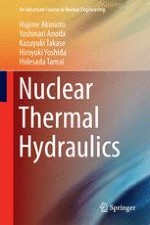2016 | OriginalPaper | Buchkapitel
9. Laminar Flow and Turbulent Flow (The Similarity Rule)
verfasst von : Hajime Akimoto, Yoshinari Anoda, Kazuyuki Takase, Hiroyuki Yoshida, Hidesada Tamai
Erschienen in: Nuclear Thermal Hydraulics
Verlag: Springer Japan
Aktivieren Sie unsere intelligente Suche, um passende Fachinhalte oder Patente zu finden.
Wählen Sie Textabschnitte aus um mit Künstlicher Intelligenz passenden Patente zu finden. powered by
Markieren Sie Textabschnitte, um KI-gestützt weitere passende Inhalte zu finden. powered by
